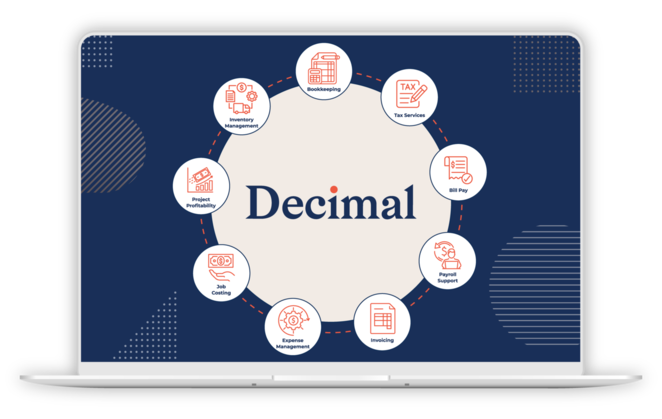As accountants, you know that payments that roll in days, weeks, or even months past their due date cripple cash flow and hamper growth.
It’s important your clients know it too. Receiving payments faster gives them quick access to the capital needed to hire top talent and upgrade equipment. It's easier to pay bills, helping avoid costly loans or running up debt on a company credit card, when they’re not chasing payments.
But reducing DSO (Days Sales Outstanding) is challenging if you or your clients are working with a manual AR (accounts receivable) process that’s slow and prone to mistakes. PYMNTS Intelligence research found that automating AR helps companies cut collection times by 67%. In a different PYMNTS study, companies automating more than half of their AR workflows reported a 32% reduction in DSO – which equates to getting paid 19 days faster.
This article explores three ways AR automation benefits accountants and their clients by lowering DSO.
Ensures accuracy
Customers are usually to blame for late payments. Sellers provide the service and set the due date, and it’s up to the buyers to get the money in on time. However, if a majority of payments are delinquent, an inadequate AR process may be the problem. Invoices littered with mistakes delay the collections process, especially if they’re labeled with an incorrect due date or sent to the wrong customer. Correcting these mistakes lengthens the time it takes to get paid.
The best way to eliminate human error is to eliminate manual labor. AR automation automatically creates and sends accurate, digital, payment-ready invoices to customers. Money rolls in quicker because there are no mistakes to correct or confusion to resolve.
Another factor driving up DSO is a disorganized payment reconciliation process. Gaps that exist between when a payment arrives and when it’s matched to an invoice can artificially inflate DSO and make it impossible to manage cash flow. How can any business reduce DSO if it isn’t calculated correctly?
AR automation automatically matches invoices to payments and streamlines the data into a single, digital platform. Your clients no longer need to spend hours checking different computers, spreadsheets, or files for payment information. This increases efficiency, eliminates mistakes, and recognizes payments immediately, shortening DSO and providing an accurate look at finances in real time.
Provides digital payment options
Paper checks are archaic, but they’re still popular: the Association for Financial Professionals’ (AFP) latest Fraud and Control Survey report found that 91% of respondents said their companies use checks – up from the 75% who used checks in 2023. Worse, 75% said they don’t plan to eliminate check usage. Perhaps customers are mailing paper checks because there are no better options.
AR automation makes it easy to receive fast, digital payments. Your clients’ customers have access to portals where they set up, manage, and store banking and credit card information. Rather than waiting weeks for checks to arrive and clear, clients get paid in a matter of days when customers use their portals to pay with credit cards and ACH (Automated Clearing House). Because their payment information is already stored in their digital wallet, customers can make these payments by literally clicking a button. The sellers get paid quicker, reducing DSO, while providing buyers with a payment option that’s safer and more convenient than writing out and mailing a check.
Digital payments are far more secure for you, your clients, and their customers. The AFP reports 63% of respondents to their survey said their organizations were hit by check fraud in 2024. Many of these organizations acknowledged their reluctance to adopt digital payments. The best way to eliminate check fraud is to eliminate checks. AR automation makes this simple while also speeding up collections.
Improves relationships with customers
A manual AR process is prone to mistakes that harm relationships with customers. Not having the bandwidth to resolve these issues and forcing customers to deal with ineffective chatbots or outsourced answering services compound the problem.
PYMNTS reports 85% of CFOs surveyed said automation helps address errors and discrepancies, solidifying relationships with buyers. AR automation accomplishes this through real-time communication features available through a customer’s portal. That way, mistakes can be corrected, and customers have the information they need to make prompt, secure payments.
Nearly 40% of buyers want more detailed information about their account, according to PYMNTS. This includes invoice histories and statuses. The right AR automation platform puts this information at a customer’s fingertips, providing 18 months of buying history and letting them know which invoices have been paid and which may have slipped through the cracks and are overdue. This enables your clients to better manage their finances – a feature your competitors probably don’t offer.
Lastly, AR automation makes it simple to send out reminders about upcoming payments. Instead of making troublesome phone calls or taking hours out of a workweek manually sending emails, your clients can simply set up automated workflows that send unobtrusive alerts to whomever, whenever, and how often they choose.
Conclusion
Running a successful B2B company is hard enough without a high DSO strangling cash flow and creating a high-stress work environment. Automating AR helps accountants and their clients accelerate collections, reduce DSO, and access the cash required to grow and sustain a successful business.
Download this free eGuide from Bill360, an AR automation platform built for B2B companies like accounting firms and their clients. Whether you’re looking for efficient invoicing or more visibility into your AR process and finances, this eGuide explains why AR automation is your ticket to lower DSO.
Sponsored Content: This article is generously brought to you by one of our valued sponsors. Their support enables us to continue delivering expert insights and the latest industry trends to our dedicated community of accounting professionals.
.png?width=150&height=63&name=TWRlogo-regmark_blueblack%20(1).png)
.png)










Do you have questions about this article? Email us and let us know > info@woodard.com
Comments: